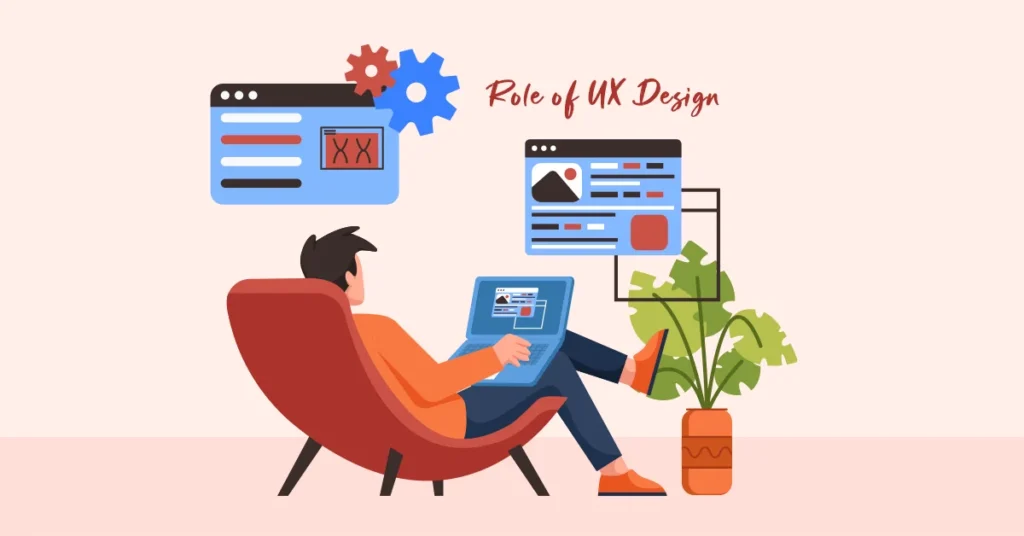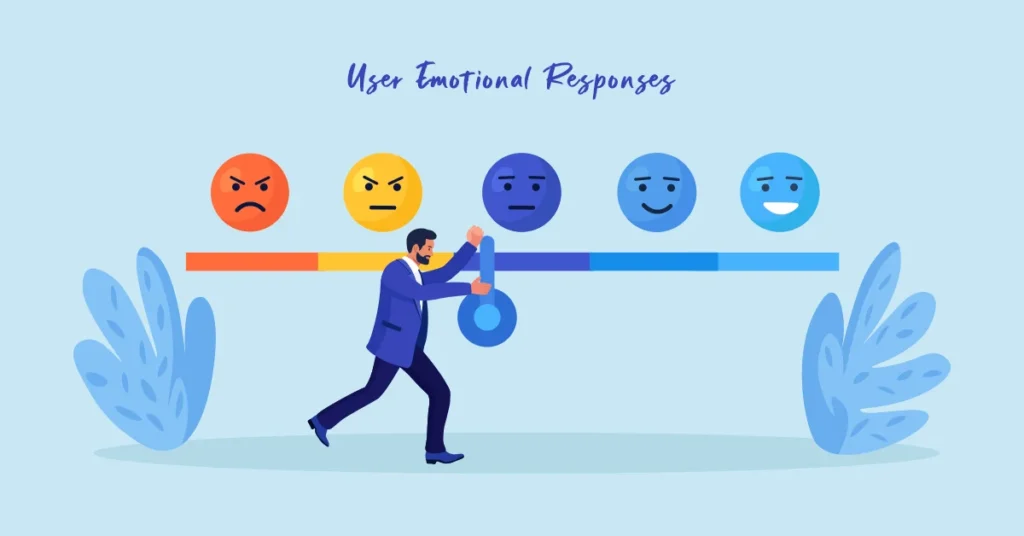
When discussing the best corporate websites, it’s essential to understand that a well-designed corporate website is crucial for brand recognition and differentiation in the digital landscape. Effective corporate identity, user-friendly design, and innovative aesthetics are key elements that contribute to a website’s success. By focusing on content strategy, brand consistency, and accessibility, companies can enhance user engagement and trust.
Understanding Corporate Websites
What is a Corporate Website?
Definition and Purpose
A corporate website is a digital representation of a company’s brand, values, and mission. It serves as a central hub for information, communication, and engagement with various stakeholders, including customers, investors, employees, and partners. The primary purpose of a corporate website is to establish credibility, build trust, and showcase the company’s products or services. In essence, a corporate website is the digital face of the company, providing a platform for interaction and engagement with its audience.
Characteristics of a Good Corporate Website
A good professional corporate website should possess the following characteristics:
User-friendly design: A good corporate website should have easy navigation, clear typography, and a responsive layout that adapts to different devices and screen sizes. This ensures that users can easily find the information they need, regardless of the device they are using.
High-quality content: Relevant, up-to-date, and engaging content is crucial for addressing the needs and interests of the target audience. This includes blog posts, articles, case studies, and other forms of content that provide valuable insights and information.
Strong branding: Consistent use of corporate colors, logos, and fonts throughout the website reinforces the company’s identity. This helps in creating a cohesive brand image that users can easily recognize and remember.
Interactive elements: Incorporating interactive features, such as drop-down menus, animations, and scrolling effects, enhances user engagement. These elements make the website more dynamic and engaging, encouraging users to interact with the content.
Social proof: Displaying customer testimonials, case studies, and certifications builds trust and credibility. Social proof shows potential clients that others have had positive experiences with the company, making them more likely to engage with the brand.
Valuable insights: Providing valuable information, such as industry news, trends, and research, establishes the company as a thought leader. This not only attracts users to the website but also keeps them coming back for more valuable content.
Engaging visuals: High-quality images, videos, and graphics create a visually appealing and engaging user experience. Engaging visuals capture the user’s attention and make the website more memorable.
Design elements: Incorporating design elements, such as typography, color schemes, and textures, creates a unique and memorable brand identity. These elements contribute to the overall aesthetic of the website, making it stand out from competitors.
Potential clients: Clear calls-to-action and easy access to contact information facilitate communication with potential clients. This makes it easy for users to get in touch with the company, whether they have questions or are interested in the products or services offered.
Lasting impression: A well-designed website creates a lasting impression and encourages users to return. By providing a positive user experience, a good corporate website ensures that users remember the brand and are more likely to engage with it in the future.
The Importance of Emotional Attachment on Corporate Websites
Emotional attachment is a crucial aspect of corporate website design. It refers to the ability of a website to create an emotional connection with its users, making them more likely to engage with the brand, remember it, and return. Emotional attachment can be achieved through various web design elements, such as:
Storytelling: Sharing the company’s story, mission, and values creates an emotional connection with users. By telling a compelling story, the website can evoke emotions and make users feel more connected to the brand.
Imagery: Using high-quality images and videos that evoke emotions and create a sense of connection. Visual content is powerful in conveying emotions and can significantly enhance the user experience.
Color schemes: Selecting colors that evoke emotions and align with the company’s brand identity. Different colors can evoke different emotions, and choosing the right color scheme can enhance the overall emotional impact of the website.
Typography: Choosing typography that is visually appealing and creates a sense of personality. The right typography can convey the brand’s personality and make the content more engaging.
Interactions: Incorporating interactive elements that create a sense of engagement and participation. Interactive features, such as animations and interactive storytelling, can make the website more engaging and memorable.
By creating an emotional attachment with users, corporate websites can:
Increase engagement: Encourage users to spend more time on the website and engage with its content. Emotional attachment makes users more interested in exploring the website and interacting with its features.
Build trust: Establish trust and credibility with users, making them more likely to become customers. When users feel an emotional connection with the brand, they are more likely to trust it and consider its products or services.
Create loyalty: Foster loyalty and advocacy, encouraging users to return and recommend the brand to others. Emotional attachment can turn users into loyal customers who advocate for the brand.
Differentiate: Differentiate the brand from competitors and create a unique identity. By creating a strong emotional connection, the website can stand out from competitors and create a lasting impression.
In conclusion, a well-designed corporate website design is essential for establishing credibility, building trust, and creating an emotional connection with users. By incorporating the characteristics of a good corporate website and creating an emotional attachment with users, companies can increase engagement, build trust, create loyalty, and differentiate themselves from competitors.
Understanding the Importance of Emotional Attachment on Corporate Websites
In the realm of Customer Experience, emotional attachment plays a pivotal role in shaping consumer perceptions and behaviours. It is essential to comprehend the significance of emotional attachment within the context of a corporate site, as it directly influences user engagement and brand loyalty.
Defining Emotional Attachment in the Context of Customer Experience
Emotional attachment refers to the deep connection and resonance that individuals develop with a brand or product on an emotional level. According to a study by Forrester, emotionally engaged customers are three times more likely to recommend a product or service, showcasing the profound impact of emotional connections on consumer behaviour. This highlights the intrinsic link between emotional attachment and customer advocacy, emphasising its critical role in fostering long-term relationships with consumers. Brands that do an excellent job in creating these emotional connections often see significant improvements in customer loyalty and satisfaction.
Why Emotional Attachment Matters for Corporate Websites
The influence of emotional attachment extends beyond mere recommendations; it significantly impacts purchasing decisions and brand perception. Consumer Purchases Insights reveal that when a product or service successfully meets consumers’ emotional needs, there is a substantial increase in their interest in purchasing that brand, elevated positive sentiment towards the brand, and a stronger likelihood of recommending it. This underscores the profound impact of emotional fulfilment on consumer behaviour and brand advocacy.
Moreover, studies conducted by the top agency Nielsen Norman Group emphasise that websites with emotionally appealing designs experience higher conversion rates and increased user satisfaction. The design elements evoke emotions that resonate with users, leading to enhanced engagement and loyalty. Dobrev’s survey further reinforces this notion by highlighting that emotional attachment accounts for about 43% of business value, surpassing the influence of promoting product features.
The significance of emotional attachment is not confined to large corporations; small businesses can also leverage it to build a loyal community around their brand. By creating a deeper connection with their audience through emotional engagement, small businesses can enhance customer loyalty and advocacy while enriching overall customer experience.
In essence, understanding and nurturing emotional attachment on corporate websites is paramount for cultivating enduring relationships with customers and fostering brand loyalty.

The Role of UX Design in Enhancing Customer Experience
In the realm of corporate websites, web designers and UX design serve as pivotal elements in shaping user interactions and perceptions. Understanding the basics of UX design and its profound impact on emotional connection is essential for fostering a compelling customer experience.
Basics of UX Design for Corporate Websites
Key Principles of Effective UX Design
Effective UX design revolves around principles that prioritise user-centric experiences. It involves creating intuitive navigation, seamless interactions, and visually appealing interfaces, such as incorporating a drop down menu to enhance user engagement. By focusing on simplicity, consistency, and accessibility, UX design aims to facilitate effortless user journeys while evoking positive emotions.
UX Design and Emotional Connection
The integration of emotional elements within UX design is instrumental in establishing a profound connection with users. By leveraging colour psychology technology, visual storytelling, and interactive features, designers can evoke specific emotions that resonate with the target audience. This emotional resonance fosters a sense of belonging and affinity towards the brand, thereby enhancing emotional attachment.
How UX Design Improves Customer Experience
Case Studies: Successful UX Design Implementations
Numerous case studies provide valuable insights into the transformative power of UX design in elevating customer experiences. A great example is the “Travel UX & UI Case Study,” which delves into the meticulous design process aimed at creating a seamless travel experience for users. The study highlights how thoughtful interface designs and streamlined navigation significantly enhanced user satisfaction and loyalty.
Similarly, the “Bookista — UX Case Study” offers a detailed exploration of designing an intuitive mobile application for book discovery. Through user-centred methodologies and empathetic design approaches, the application successfully elicited positive emotional responses from users, leading to heightened engagement and prolonged usage.
These examples underscore the tangible impact of UX design on nurturing emotional connections with users while amplifying overall customer experiences.

Identifying Emotional Triggers for Your Audience
Understanding the emotional triggers that resonate with the target audience is fundamental in crafting a compelling and resonant experience for corporate sites visitors. By delving into the audience’s needs and desires, businesses can align their website features with emotional triggers to establish a profound connection with users.
Researching Your Audience's Needs and Desires
To effectively identify emotional triggers, it is imperative to conduct thorough research into the Customer Experience landscape. Utilising tools and techniques for audience research can provide valuable insights into consumer behaviour, preferences, and emotional responses. Surveys, interviews, and analytics data offer a comprehensive understanding of user sentiments and emotional inclinations. Additionally, leveraging social listening tools enables businesses to gauge real-time reactions and emotions expressed by their target audience across various digital platforms.
Furthermore, studies such as “Emotional Design in UX: Creating Engaging and Meaningful User Experiences” emphasise the impact of emotional design on user engagement. The integration of emotionally appealing elements within website features can lead to increased user satisfaction and loyalty, underscoring the significance of aligning design with emotional triggers.
In essence, by comprehensively researching audience needs and desires through diverse methodologies, businesses can gain profound insights into the emotional landscape of their target demographic.
Mapping Emotional Triggers to Website Features
Once the emotional landscape of the target audience has been delineated, mapping these emotional triggers to specific website features becomes pivotal. Examples of Emotional Triggers in Action illustrate how particular site design aspects can evoke positive emotions and create memorable experiences for users.
The study “Design for Emotion to Increase User Engagement” highlights that emotions significantly influence user behaviour. Negative experiences narrow thought processes and induce anxiety, while positive emotional design elicits pleasure and a sense of security. This underscores the importance of integrating emotionally resonant elements such as colour schemes, imagery, and interactive interfaces within website features to foster positive user experiences.
Moreover, “The Role of Emotional Design in UX Design” emphasises that emotionally intelligent design aims to evoke positive emotions while deepening user loyalty. By incorporating emotionally resonant elements into website features and templates, businesses can create an immersive environment that aligns with users’ psychological well-being.
By mapping these insights from research findings to tangible website features and functionality, businesses can effectively cultivate an emotionally engaging digital space that resonates with their target audience’s desires.

Crafting a User-Centric Website Redesign Strategy
Incorporating emotional design principles into UX is pivotal for crafting a user-centric website redesign strategy that fosters a profound connection with users. By aligning the redesign process with emotional engagement, businesses can create an immersive digital space that resonates with their target audience’s desires.
Steps to Plan a Website Redesign with UX in Mind
Setting Goals for Your Redesign
When embarking on a website redesign, it is essential to establish clear and measurable goals that encompass both functional usability and emotional engagement. The overarching objective should revolve around creating a seamless and emotionally resonant user experience that aligns with the brand’s identity. By setting specific targets for enhancing user satisfaction and fostering emotional connections, businesses can ensure that the redesign process remains focused on delivering meaningful experiences.
Moreover, ethical considerations must guide the implementation of emotional design to ensure a responsible and positive user experience. This entails prioritising user well-being and privacy while leveraging emotional elements to create authentic connections with users.
Involving Stakeholders in the Redesign Process
Involving stakeholders from diverse departments, including marketing, customer service, and design teams, is crucial for ensuring a holistic approach to website redesign. Collaborative discussions enable the integration of multifaceted perspectives into the redesign strategy, leading to comprehensive solutions that cater to both functional and emotional aspects of user experience. By fostering cross-departmental collaboration, businesses can harness collective expertise to infuse emotional resonance into every facet of the redesigned website.
Implementing Emotional Design Elements
Visuals, Colors, and Typography
The visual aesthetics of a website play a pivotal role in evoking emotions and shaping user perceptions. Incorporating visually appealing elements such as captivating imagery, vibrant colors, harmonious colour schemes, and expressive typography can create an emotionally engaging environment for users. Leveraging colour psychology to evoke specific emotions aligns with users’ psychological well-being while fostering brand recognition and recall.
Furthermore, ethical considerations must guide the selection of visuals, colours, and typography to ensure responsible usage that respects diverse user preferences. By integrating inclusive design principles into visual elements, businesses can create an emotionally resonant visual language that caters to varied user experiences.
Interactive Elements that Foster Emotional Attachment
Interactive features within a website serve as potent tools for nurturing emotional attachment among users. Thoughtfully designed interactive elements such as personalised recommendations, interactive storytelling interfaces, and empathetic chatbots can elicit positive emotions while facilitating meaningful interactions. Ethical considerations underscore the importance of ensuring transparent communication during interactive experiences while safeguarding user privacy.
Combining functional page usability with emotionally resonant interactive elements is key to creating truly outstanding user experiences in the digital realm. By implementing these interactive features responsibly within the redesigned website, businesses can foster deeper connections with users while elevating overall customer experience.

The UI UX Designer's Toolkit for Emotional Engagement
In the realm of UX design, the toolkit available to UI UX designers, including various website builders, plays a crucial role in fostering emotional engagement and creating designs that evoke positive user experiences. By leveraging essential tools, software, and best practices, designers can enhance emotional attachment and resonate with users on a profound level.
Essential Tools and Software for UI UX Designers
Design and Prototyping Tools
UI UX designers rely on an array of design and prototyping tools to bring their creative visions to life. Tools such as Sketch, Adobe XD, and Figma facilitate the creation of visually compelling interfaces while enabling seamless collaboration among design teams. These platforms empower designers to craft emotionally resonant designs by incorporating colour psychology, visual storytelling, and interactive features that evoke specific emotions aligned with users’ psychological well-being.
Moreover, patent applications often detail the deliberate problem-solving approach taken to enhance UX through wireframes, user flow diagrams, and other documentation. This not only supports the application’s claims but also showcases the innovation’s value in real-world scenarios.
User Testing and Feedback Tools
User testing and feedback are integral components of refining emotional design within UX. Platforms like UserTesting and Optimal Workshop enable designers to gather valuable insights into user behaviour, preferences, and emotional responses. By conducting thorough research into user sentiments and inclinations at visceral, behavioural, and reflective cognitive levels, designers can iteratively refine their designs to evoke positive associations with products or brands.
Best Practices for UI UX Designers to Enhance Emotional Attachment
Personalization is a powerful tool for enhancing emotional attachment within digital experiences. By tailoring content based on user preferences, behaviours, or demographics, UI UX designers can create personalised interactions that resonate deeply with users. Leveraging personalization techniques not only fosters a sense of belonging but also elicits positive emotions associated with tailored experiences.
Furthermore, patent applications emphasise the significance of personalization in creating emotionally engaging user experiences. The concept of reaching users at visceral, behavioural, and reflective cognitive levels aligns with the principles of personalization aimed at evoking specific emotions that lead to positive associations with products or brands.
Creating Intuitive and Memorable User Experiences
The creation of intuitive interfaces that prioritise ease of use is fundamental in fostering memorable user experiences embedded with emotional resonance. By employing intuitive navigation structures, clear information architecture, and seamless interactions, UI UX designers can cultivate emotionally engaging environments that leave a lasting impression on users. This approach aligns with patent applications that showcase deliberate problem-solving approaches aimed at enhancing UX through intuitive design elements.
In essence, by leveraging these essential tools along with best practices such as personalization techniques and intuitive design principles,UX UI designers can elevate emotional attachment within corporate websites while resonating deeply with their target audience’s desires.

Measuring the Impact of Emotional Attachment Strategies
After implementing emotional attachment strategies, it is crucial to measure their impact on Customer Experience and overall brand performance. Tracking key metrics provides valuable insights into the effectiveness of these strategies and enables businesses to make data-driven decisions for continuous improvement.
Key Metrics to Track Success
User Engagement Metrics
Measuring user engagement before and after implementing emotional attachment strategies reveals the profound impact of emotional design on increasing engagement and fostering a deeper connection between users and the product. By analysing metrics such as time spent on the website, interaction rates, and return visits, businesses can gauge the level of user involvement influenced by emotional resonance.
Customer Satisfaction and Loyalty Metrics
Assessing customer satisfaction and loyalty metrics unveils the extent to which emotional attachment strategies have resonated with consumers. By comparing consumer needs met before and after the implementation of emotional design, businesses can discern how meeting emotional needs leads to higher interest in purchasing, elevated positive sentiment towards the brand, and a stronger likelihood of recommending it. Furthermore, evaluating brand passion against brand loyalty elucidates how brand passion positively affects long-term brand advocacy.
Adjusting Strategies Based on Feedback and Data
Iterative Design and Continuous Improvement
Embracing an iterative design approach based on feedback and data empowers businesses to adapt their emotional attachment strategies effectively. Campaigns with purely emotional content have been shown to perform nearly twice as well than those with only rational content, emphasising the need for continuous refinement guided by user responses. By iteratively refining emotional elements within website features, businesses can create emotionally engaging experiences that resonate deeply with users while fostering positive associations with products or brands.
Case Studies: Companies That Successfully Adapted Their Strategies
Analysing case studies showcasing companies that successfully adapted their strategies based on feedback and data offers valuable insights into effective approaches for leveraging emotional attachment. These studies demonstrate how emotional design increases engagement, fosters a positive work culture, elicits a positive response in users, and serves as the biggest driver of value, responsible for about 43% of business value. By drawing inspiration from these success stories, businesses can refine their own strategies to align with evolving consumer sentiments while nurturing enduring relationships with their audience.
In essence, tracking key metrics related to user engagement, customer satisfaction, loyalty, and adaptive strategies is essential for evaluating the impact of emotional attachment strategies while guiding continuous improvement efforts.




